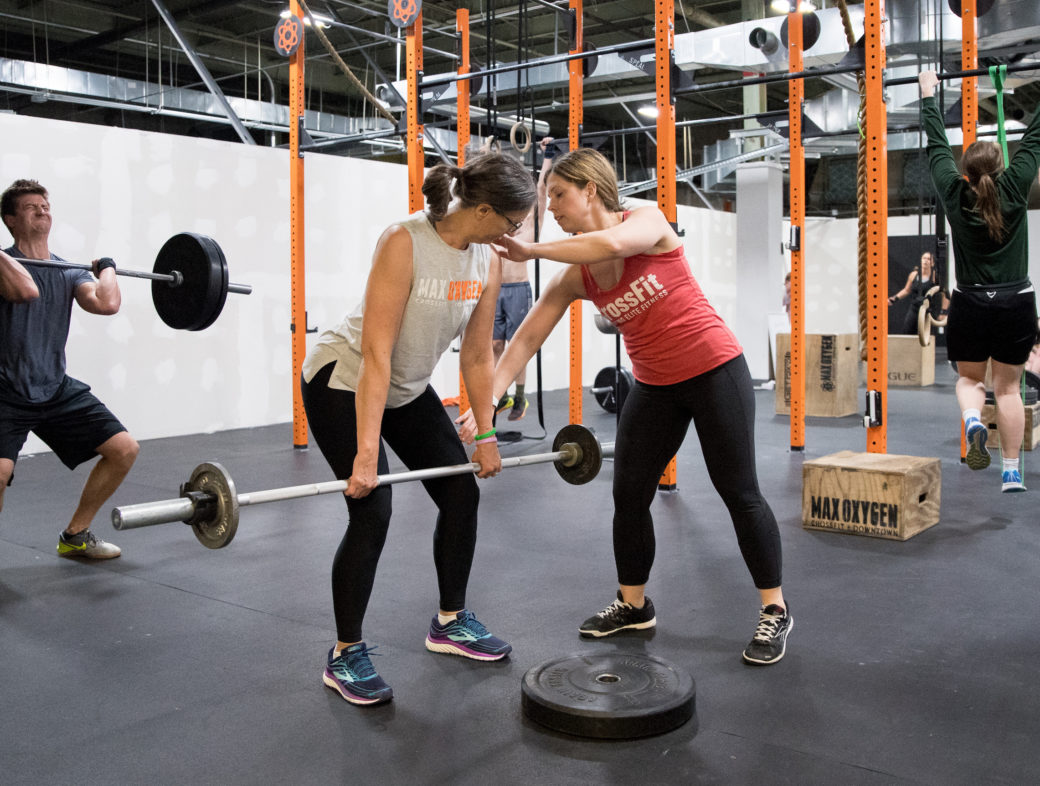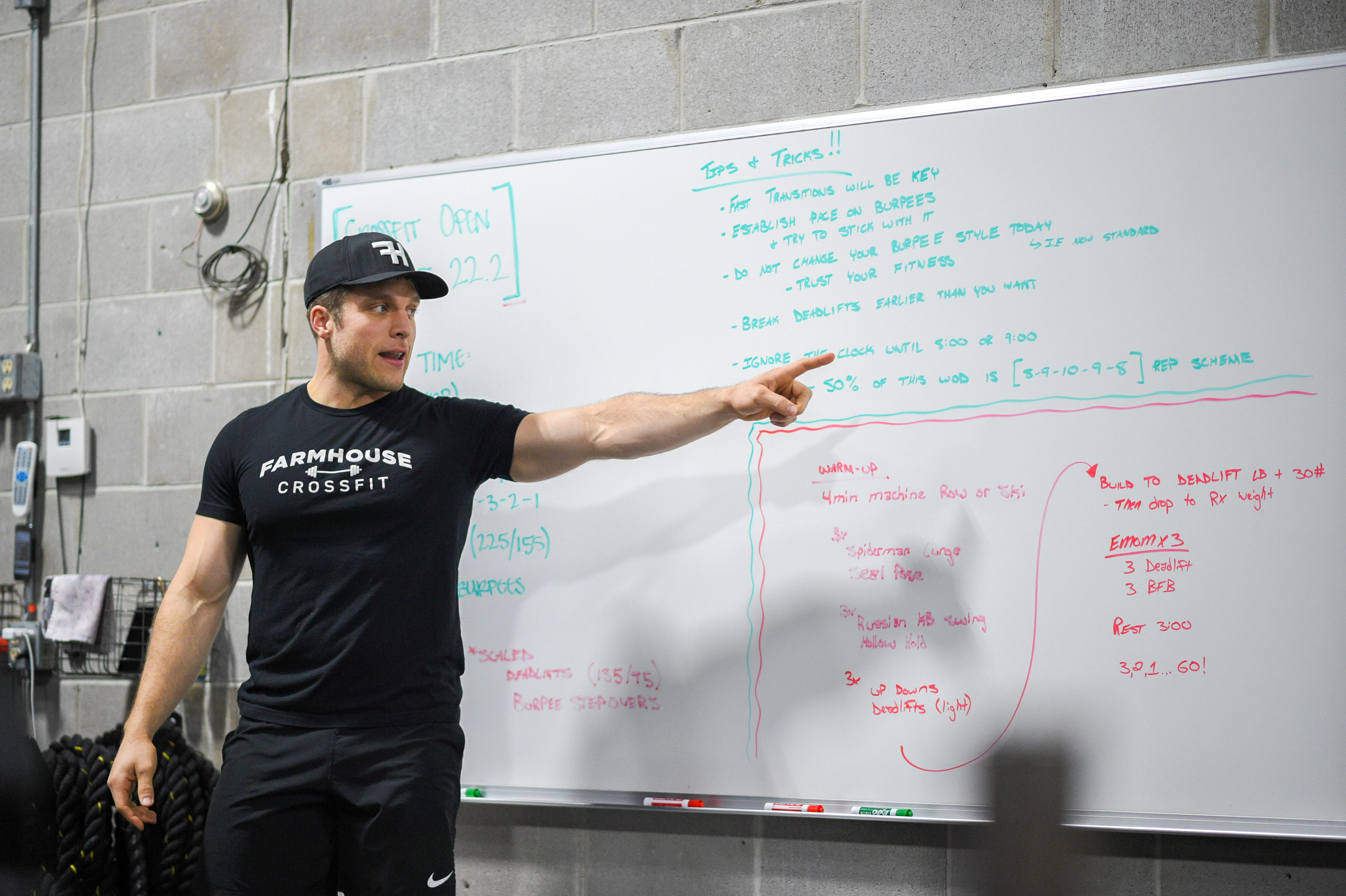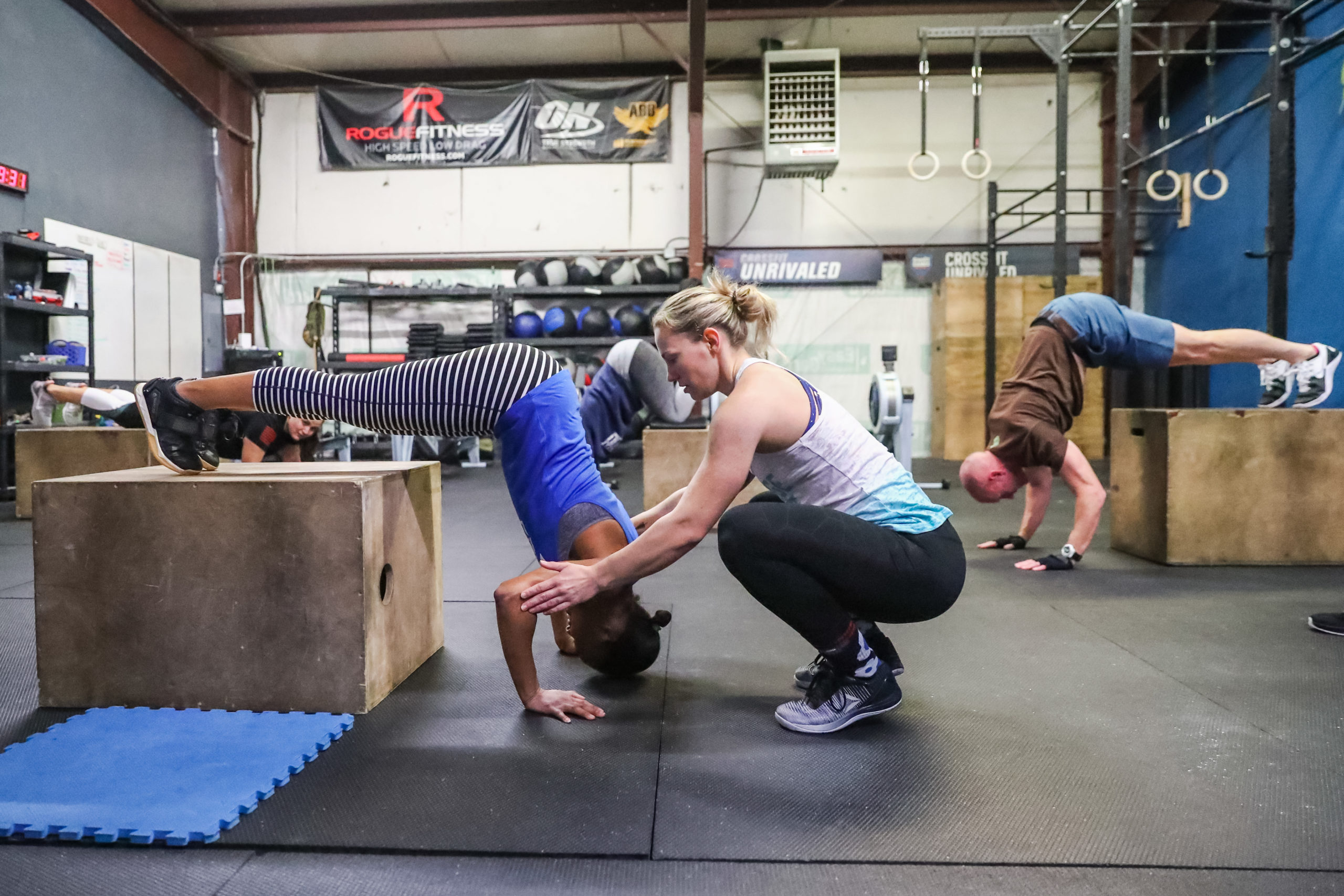There is no dearth of “experts” out there; all you need to be a health or fitness guru is an Instagram account and good lighting.
But just as CrossFit was the first to define fitness in an objectively measurable, observable, and repeatable way, it was the first to professionalize the fitness trainer in a meaningful way. I’m not talking about the mic’d-up group-fitness instructor leading a choreographed workout routine or the personal trainer with a sales quota to meet — and I’m not disparaging them, either. They offer a guided exercise experience that’s better than nothing.
But for long-lasting, life-changing results, you need the kind of coach equipped to change lives.

Something’s Missing …
So, what makes a coach equipped?
The American College of Sports Medicine (ACSM), National Academy of Sports Medicine (NASM), American Council on Exercise (ACE), and the International Sports Sciences Association (ISSA) are touted as some of the most well-known and respected certifying bodies for fitness trainers (so is the National Strength and Conditioning Association [NSCA], despite its proven corruption).
Each organization offers a selection of increasingly prestigious-sounding certifications, ranging from certified “personal trainer” or “group exercise instructor” to “elite trainer” to “performance and sport scientist.” To earn such credentials, aspiring trainers must be 18 or older, possess a high-school diploma/equivalent and current CPR/AED certification, and pass an exam. Exams range from 100-190 multiple-choice questions, and some can be taken online — a few are even open-book. Most of these certifications cost between US$100 and $300, and topics covered include basic and applied sciences and nutritional concepts, client assessment, program design, exercise technique, client relations, exercise leadership, and risk management.
But despite the ostensible rigor of these certification programs, there’s one glaring omission: practical instruction. I’m trying to think of any other industry or field of study that grants its students a professional certification with no hands-on training, and I’m coming up blank. I wonder, could I become a forklift operator with just an online test? (The answer is “No.”)
The absence of practical instruction by these certifying bodies leaves it up to the individual to amass some sort of experience — likely by training friends or family — in order to one day get a job. But translating theories and diagrams from paper to the human standing before you is easier said than done — and if I were someone who wanted to learn to move better (I am), I’d want to learn from someone who’d been taught to move.
CrossFit Coaches Are Fitness Experts
It was the last day of June 2018, and sweat dripped from my brow to the floor of CrossFit Omaha as I held the bottom of a squat.
A handful of athletes squatted in the circle with me during the afternoon’s small-group breakout session, part of the CrossFit Level 1 Certificate Course. Seminar Staff Trainer and Certified CrossFit Level 4 (CF-L4) Coach Pablo Cervigni circled the group, cueing and correcting every athlete in turn as our quads burned.
“Knees out — chest up — weight in the heels!”
By that point, I’d been doing CrossFit for almost six years, and if you’d asked me to tell you about the air squat, I could’ve rattled off enough points of performance to make your eyes glaze over.
And yet, when Pablo got to me, I got a correction, too — because nothing can compare to real-time feedback from one of the most qualified trainers in the world. You just don’t know how it really feels to keep your weight in your heels until a coach holds a PVC pipe right in front of you. And you don’t realize just how much your knees are caving in until your coach tells you to extend until your knee taps their hand.
And without being properly coached, you can’t expect to properly coach someone else.
That’s why the two-day, in-person Level 1 includes multiple breakout sessions integrated between live lectures on the fundamental principles and movements of CrossFit, professional training and scaling, and nutrition. Small-group breakout sessions allow individuals of any fitness level to simultaneously improve their movement mechanics while learning effective coaching techniques. Each day also features a coach-led group workout, and once you’ve caught your breath after Sunday’s workout, you hunker down to take the 55-question exam. To earn the credential of CrossFit Level 1 Trainer, participants must not only pass the test but also be present for 100% of all lectures and give 100% participation in all practical breakout sessions and workouts.
Though a credentialing experience well beyond any of the courses of study listed above, the Level 1 is CrossFit’s most fundamental qualification. It’s the starting point for anyone seeking to improve their health and fitness through effective training and nutritional strategies and the elemental requirement for every CrossFit affiliate owner and trainer.
In other words, it’s just the beginning.


